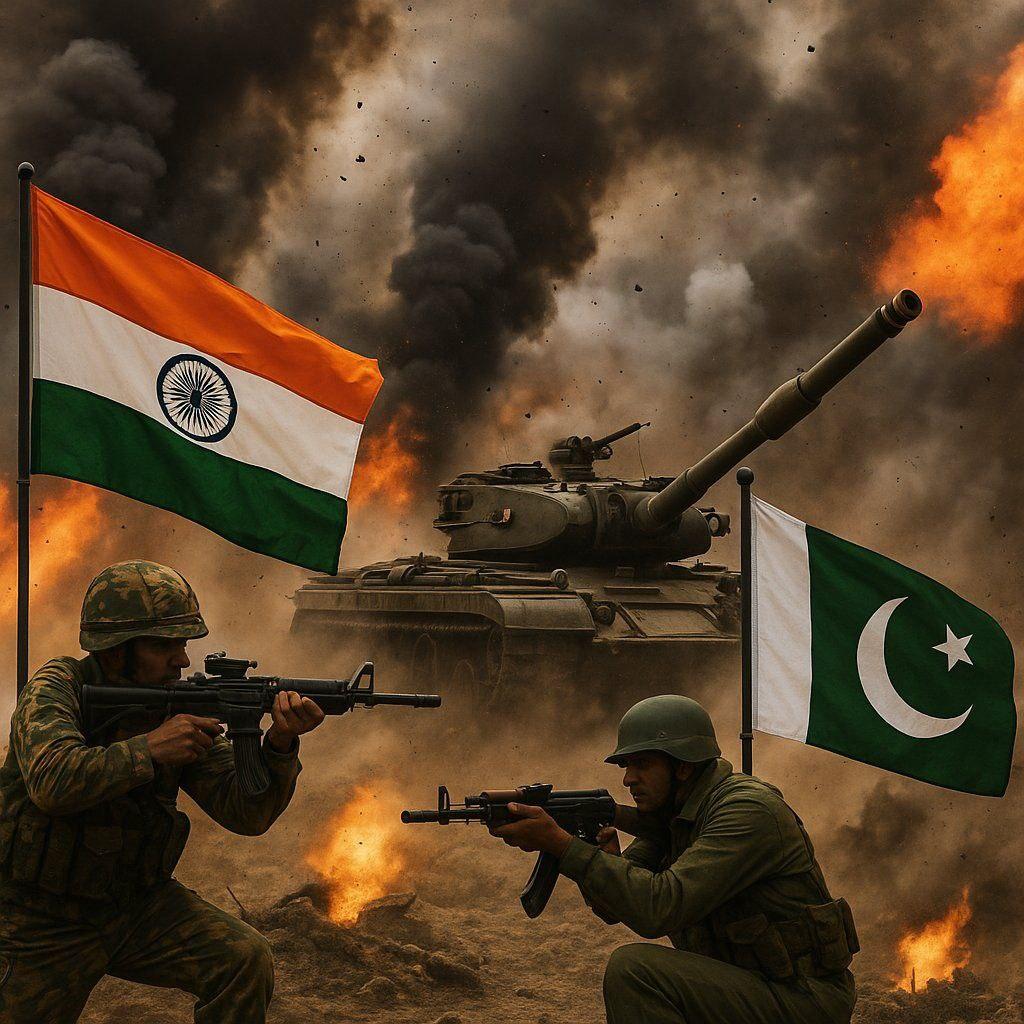India–Pakistan Conflict Tracker: Uncovering the Tensions Through Open-Source Media

In May 2025, South Asia was once again thrust into the international spotlight, as India and Pakistan engaged in their most dangerous military escalation since the Pulwama-Balakot episode in 2019. This time, the trigger was not just a border skirmish — it was a full-blown, multi-theater retaliation involving airstrikes, civilian casualties, and cross-border claims of aerial victories.
Here’s what happened, step by step.
🧨 The Spark: Pahalgam Terror Attack (April 22, 2025)
The escalation began with a brutal terrorist attack in Pahalgam, a tourist hub in Indian-administered Kashmir. Twenty-six civilians — mostly domestic Hindu tourists — were killed in a coordinated shooting and bombing at a religious site. India immediately pointed the finger at Lashkar-e-Taiba and Jaish-e-Mohammed, two Pakistan-based terror groups.
The Indian government vowed a “decisive response.”
🚀 May 6: India Launches Operation Sindoor
At dawn on May 6, the Indian Air Force initiated Operation Sindoor, a precision strike campaign targeting alleged terrorist infrastructure deep inside Pakistan and Pakistan-administered Kashmir.
According to Indian defense sources:
-
9 targets were struck with laser-guided bombs and cruise missiles.
-
Rafale, Su-30, and Mirage-2000 jets were involved.
-
Targets included “training camps, launch pads, and communication hubs.”
The strikes were seen as symbolically and strategically aggressive — many of the targets were located close to major Pakistani military installations.
🛩️ May 6–7: Pakistan Retaliates, Air Combat Erupts
Within hours, Pakistan responded militarily. It scrambled fighter jets, activated air defenses, and claimed that:
-
It had intercepted and shot down multiple Indian aircraft, including a Rafale, a MiG-29, and an Indian drone.
-
Footage circulated on Pakistani channels showed wreckage believed to be from a MICA missile, a French-made weapon system used by India’s Rafale fleet, found in Punjab, just 20 km from an Indian airbase.
India denied losing any aircraft but did not refute the authenticity of the debris.
🛡️ Ground Forces Mobilized: Tanks in Lahore
Videos and images — some captured by civilians — showed Pakistani tanks and armored columns moving through the streets of Lahore, heading toward the border region. This development, while not necessarily offensive in nature, indicated readiness for wider conflict.
India, too, was observed deploying forces to the northern sectors of Punjab and Jammu.
🕌 Civilian Impact: Shelling Hits Mosque, Casualties Reported
In one of the most sensitive incidents, Indian shelling reportedly hit a mosque in Pakistan, leading to multiple civilian casualties. Pakistan condemned the strike as a violation of international law, while India maintained that all targets were selected with “extreme care.”
By May 7:
-
Pakistan reported at least 26 civilian deaths
-
India confirmed 7 civilian deaths due to retaliatory shelling in border villages
🌐 Global Response: Urgent Calls for De-escalation
The international community reacted swiftly:
-
The United Nations, Russia, China, and the U.S. urged both countries to exercise restraint.
-
The Guardian and Al Jazeera began running live coverage as the situation developed.
-
Emergency UNSC consultations were reportedly requested by Pakistan.
📊 The Role of Open-Source Intelligence (OSINT)
What made this conflict unique was the visibility of events in near real-time through:
-
Civilian-shot videos
-
Satellite imagery
-
Weapon debris analysis
-
Social media geolocation
Our Conflict Tracker dataset gathered and analyzed dozens of such data points — including video-confirmed missile impacts, eyewitness accounts, and troop movements — to build a structured picture of the escalation.
1. Operation Sindoor – India’s Precision Response
On May 6, India launched Operation Sindoor, a coordinated series of strikes against nine high-value targets in Pakistan and Pakistan-administered Kashmir. The operation was a response to the April 22 terrorist attack in Pahalgam that killed 26 civilians, primarily tourists. India directly blamed Lashkar-e-Taiba and Jaish-e-Mohammed, groups believed to operate from Pakistani soil.
“This operation was about restoring deterrence, not escalation,” said a senior Indian defense official.
2. Pakistan’s Reaction and Claims
In return, Pakistan reported extensive civilian casualties, including women and children. It claimed to have downed several Indian aircraft—including Rafale, MiG-29, and Su-30 jets—while releasing footage allegedly showing wreckage and missile fragments. India has not acknowledged any such losses.
A particularly notable entry in the dataset includes a confirmed video showing MICA missile remnants in Punjab, 20 kilometers from a Rafale squadron base.
3. Tanks in Lahore: The March to the Border
Other entries document Pakistani tank columns advancing through the city of Lahore, en route to the Indian border. The footage, verified by local witnesses, shows armor moving during nighttime under blackout protocols—suggesting heightened military readiness.
4. Collateral Damage and Civilian Losses
Sadly, as is often the case, civilians bear the brunt. Among the most shared videos was one depicting a mosque struck by Indian artillery, leading to local outrage and demonstrations. Civilian casualties have been confirmed on both sides, prompting concern from international watchdogs.
🌍 Global Reactions
-
The United Nations, United States, Russia, and China have issued strong calls for restraint.
-
The Guardian reported that Pakistan is calling for an emergency session of the UN Security Council.
-
India maintains that all its strikes were “precision-guided” and “surgically targeted.”
🧠 Why This Dataset Matters
This isn’t just a log of events—it’s a living map of escalation, showing how quickly rhetoric becomes action:
-
Media-driven warfare: The prevalence of video evidence highlights how conflict is now as much digital as it is physical.
-
Early warning signals: Rapid mobilization of armor and airpower, as seen in this dataset, is a potential precursor to conventional war.
-
Civilian narratives: The voices of villagers, eyewitnesses, and amateur videographers provide a counterpoint to state propaganda.
🧩 Limitations to Consider
While powerful, the dataset is not without its caveats:
-
It lacks exact geospatial metadata
-
Descriptions may reflect unverified claims
-
Topic classification, while intelligent, may miss nuanced events
Still, as a tool for open-source analysts, journalists, and policymakers, it’s a vital resource for understanding both the facts on the ground and the information war around them.
📌 Final Thoughts
As tensions between India and Pakistan escalate once more, structured open-source datasets like the India–Pakistan Conflict Tracker provide not just documentation—but context, clarity, and accountability.
Conflict is no longer just reported—it’s recorded, categorized, and analyzed in real-time. And in that, there is hope—not just for better insight, but for faster, smarter diplomacy.

